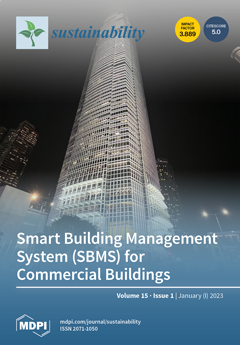With the continuous emergence of global warming and excessive waste of resources, especially in the clothing industry, sustainable clothing has become a fast-moving consumer goods trend. As a necessity of life, clothing often sensitively reflects the fashion, the characteristics of the times and,
[...] Read more.
With the continuous emergence of global warming and excessive waste of resources, especially in the clothing industry, sustainable clothing has become a fast-moving consumer goods trend. As a necessity of life, clothing often sensitively reflects the fashion, the characteristics of the times and, for young people, their lifestyle. Intelligent, cultural and sustainable clothing has become the mainstream development trend of the clothing industry. Based on the theory of reasoned action, this research takes online clothing stores as the research object and constructs the effect model between e-store image, consumer attitude and intention, and verifies the impact of e-store image on consumers’ intention in the two important stages of information search and purchase. By distributing online questionnaires to consumers of online clothing stores, 823 questionnaires were finally effectively recovered. The hypothesis was verified using a multi-statistical analysis and structural equation model. The findings showed that for young consumers, in the information search stage, the three dimensions of e-store image, which are information, atmosphere and convenience, positively affect consumers’ search intention. Meanwhile, in the purchase stage, the three dimensions of e-store image, which are enjoyment, uncertainty and service, have a significant impact on consumers’ purchase intention. Particularly, consumer attitude plays a mediating role between different dimensions and intentions. According to the constructed consumer attitude model, we should propose these sustainable marketing suggestions for online clothing stores: First of all, online clothing store operators should improve the atmosphere, convenience and information image of electronic stores, establish a sustainable image, and enhance young consumer’s identity. Secondly, using multiple marketing methods, we can establish an unimpeded one-to-one interaction with young customers through the current popular live broadcast marketing, improve the enjoyment of stores, more specifically implement marketing strategies, and strengthen the sense of sustainability.
Full article





